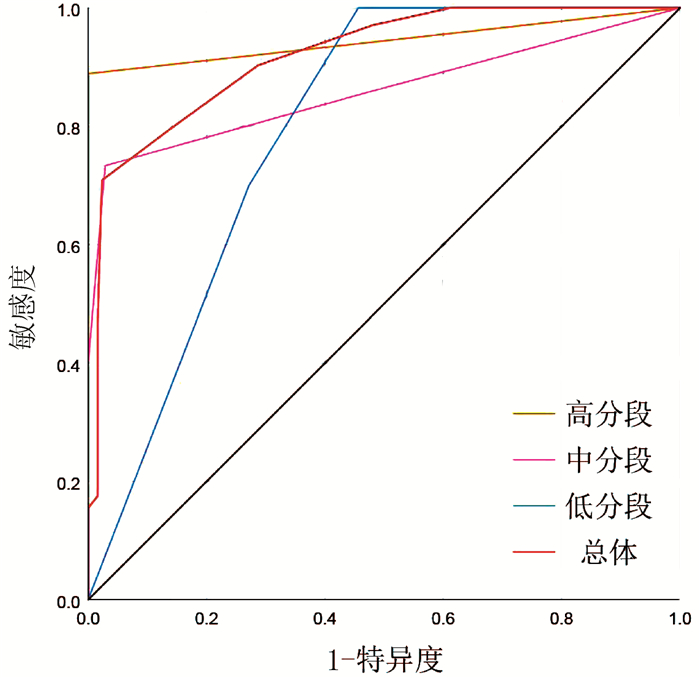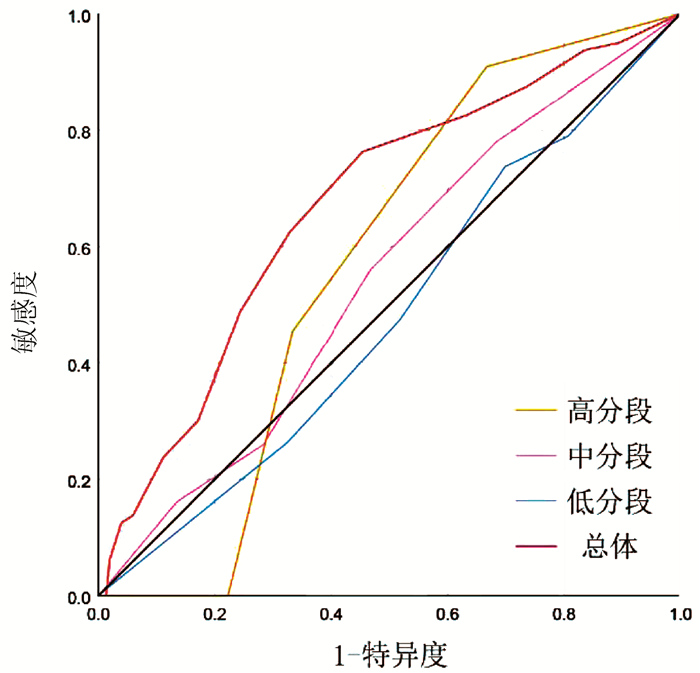| [1] |
BRAY F, FERLAY J, SOERJOMATARAM I, et al. Global cancer statistics 2018: GLOBOCAN estimates of incidence and mortality worldwide for 36 cancers in 185 countries[J]. CA Cancer J Clin, 2018, 68(6): 394-424. DOI: 10.3322/caac.21492. |
| [2] |
European Association for the Study of the Liver. EASL Clinical Practice Guidelines for the management of patients with decompensated cirrhosis[J]. J Hepatol, 2018, 69(2): 406-460. DOI: 10.1016/j.jhep.2018.03.024. |
| [3] |
TSILIMIGRAS DI, BAGANTE F, SAHARA K, et al. Prognosis after resection of Barcelona Clinic Liver Cancer (BCLC) stage 0, A, and B hepatocellular carcinoma: A comprehensive assessment of the current BCLC classification[J]. Ann Surg Oncol, 2019, 26(11): 3693-3700. DOI: 10.1245/s10434-019-07580-9. |
| [4] |
|
| [5] |
YANG WS, ZENG XF, LIU ZN, et al. Diet and liver cancer risk: A narrative review of epidemiological evidence[J]. Br J Nutr, 2020, 124(3): 330-340. DOI: 10.1017/S0007114520001208. |
| [6] |
XU W, LIU F, SHEN X, et al. Prognostic nomograms for patients with hepatocellular carcinoma after curative hepatectomy, with a focus on recurrence timing and post-recurrence management[J]. J Hepatocell Carcinoma, 2020, 7: 233-256. DOI: 10.2147/JHC.S271498. |
| [7] |
LIU YW, YONG CC, LIN CC, et al. Liver resection of hepatocellular carcinoma within and beyond the Barcelona Clinic Liver Cancer guideline recommendations: Results from a high-volume liver surgery center in East Asia[J]. J Surg Oncol, 2020, 122(8): 1587-1594. DOI: 10.1002/jso.26183. |
| [8] |
TSILIMIGRAS DI, BAGANTE F, MORIS D, et al. Recurrence patterns and outcomes after resection of hepatocellular carcinoma within and beyond the barcelona clinic liver cancer criteria[J]. Ann Surg Oncol, 2020, 27(7): 2321-2331. DOI: 10.1245/s10434-020-08452-3. |
| [9] |
KABIR T, SYN N, RAMKUMAR M, et al. Effect of surgical delay on survival outcomes in patients undergoing curative resection for primary hepatocellular carcinoma: Inverse probability of treatment weighting using propensity scores and propensity score adjustment[J]. Surgery, 2020, 167(2): 417-424. DOI: 10.1016/j.surg.2019.09.022. |
| [10] |
Medical Administration of the National Health Commission of the people's Republic of China. Guidelines for diagnosis and treatment of primary liver cancer in China (2019 edition)[J]. J Clin Hepatol, 2020, 36(2): 277-292. DOI: 10.3969/j.issn.1001-5256.2020.02.007. |
| [11] |
YANG F, MA L, YANG Y, et al. Contribution of hepatitis B virus infection to the aggressiveness of primary liver cancer: A clinical epidemiological study in Eastern China[J]. Front Oncol, 2019, 9: 370. DOI: 10.3389/fonc.2019.00370. |
| [12] |
WANG S, WU QW, LI XK, et al. Interpretation of guidelines for diagnosis and treatment of primary liver cancer in China (2019 edition)[J]. J Clin Hepatol, 2020, 36(5): 996-999. DOI: 10.3969/j.issn.1001-5256.2020.05.009. |
| [13] |
WU JC, HUANG YH, CHAU GY, et al. Risk factors for early and late recurrence in hepatitis B-related hepatocellular carcinoma[J]. J Hepatol, 2009, 51(5): 890-897. DOI: 10.1016/j.jhep.2009.07.009. |
| [14] |
WANG B, XIA CY, LAU WY, et al. Determination of clonal origin of recurrent hepatocellular carcinoma for personalized therapy and outcomes evaluation: A new strategy for hepatic surgery[J]. J Am Coll Surg, 2013, 217(6): 1054-1062. DOI: 10.1016/j.jamcollsurg.2013.07.402. |
| [15] |
KIM JM, KWON CH, JOH JW, et al. Intrahepatic metastasis is more risky than multiple occurrence in hepatocellular carcinoma patients after curative liver resection[J]. Hepatogastroenterology, 2015, 62(138): 399-404. DOI: 10.5754/hge131006. |
| [16] |
LIN S, YE F, RONG W, et al. Nomogram to assist in surgical plan for hepatocellular carcinoma: A prediction model for microvascular invasion[J]. J Gastrointest Surg, 2019, 23(12): 2372-2382. DOI: 10.1007/s11605-019-04140-0. |
| [17] |
ZHANG X, LI J, SHEN F, et al. Significance of presence of microvascular invasion in specimens obtained after surgical treatment of hepatocellular carcinoma[J]. J Gastroenterol Hepatol, 2018, 33(2): 347-354. DOI: 10.1111/jgh.13843. |
| [18] |
ROAYAIE S, BLUME IN, THUNG SN, et al. A system of classifying microvascular invasion to predict outcome after resection in patients with hepatocellular carcinoma[J]. Gastroenterology, 2009, 137(3): 850-855. DOI: 10.1053/j.gastro.2009.06.003. |
| [19] |
ERSTAD DJ, TANABE KK. Prognostic and therapeutic implications of microvascular invasion in hepatocellular carcinoma[J]. Ann Surg Oncol, 2019, 26(5): 1474-1493. DOI: 10.1245/s10434-019-07227-9. |
| [20] |
REGIMBEAU JM, ABDALLA EK, VAUTHEY JN, et al. Risk factors for early death due to recurrence after liver resection for hepatocellular carcinoma: Results of a multicenter study[J]. J Surg Oncol, 2004, 85(1): 36-41. DOI: 10.1002/jso.10284. |
| [21] |
LAFARO K, GRANDHI MS, HERMAN JM, et al. The importance of surgical margins in primary malignancies of the liver[J]. J Surg Oncol, 2016, 113(3): 296-303. DOI: 10.1002/jso.24123. |
| [22] |
HU W, HUANG S, DONG L, et al. MDR1 gene polymorphism correlated with pathological characteristics and prognosis in patients with primary hepatocellular carcinoma receiving interventional therapy[J]. Anticancer Drugs, 2019, 30(3): 233-240. DOI: 10.1097/CAD.0000000000000680. |








 本站查看
本站查看






 DownLoad:
DownLoad:
